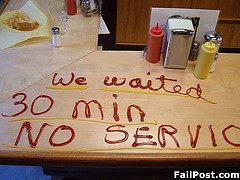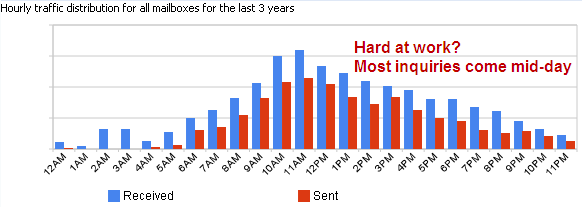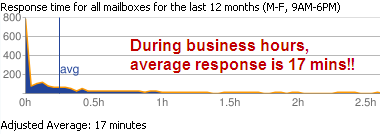 One of my goals when starting Pukka Software in 2002 was to exceed the level of customer service that I had experienced in dealing with motorsport companies. I can't count how many times I received the wrong brake pads, orders didn't ship on time or parts were missing from a box. Most driving and racing-related businesses are owned by racers who are too busy trying to go racing to commit to quality customer service. That's short-term thinking.
One of my goals when starting Pukka Software in 2002 was to exceed the level of customer service that I had experienced in dealing with motorsport companies. I can't count how many times I received the wrong brake pads, orders didn't ship on time or parts were missing from a box. Most driving and racing-related businesses are owned by racers who are too busy trying to go racing to commit to quality customer service. That's short-term thinking.I believe customer service is a sales tool rather than a cost center. Every dollar spent to help existing customers have a positive experience translates to lower churn, better word-of-mouth and stronger relationships leading to easier subsequent sales. It's also more satisfying to have happy customers. So it's internal review time, are we walking the walk? Here are some stats from our email support tool EmailCenterPro:

Let's start with a high-level three-year trend of email volume. Clearly as we add customers, our email volume increases. The blue line represents inbound email (inquiries) while red is outbound (responses). Not every email requires a response and some are simply confirmations so we send slightly less email than we receive. We can see the beginning of 2011 is up compared to 2010 at the same time.
We also calculated the number of inquiries per registration handled and that number is staying constant. This gives us confidence that our support is keeping pace with our growth although there are certainly days at the beginning of the year when it feels like we are drowning in email.

This is our email volume by time of day. We know that people have the disposable income to attend events held by our customers but it doesn't seem like they're working very hard in the middle of the day! Ok, maybe they're just on lunch break. :)
These times are all Pacific so as people wake up on the East coast, we start to field support email until the West coasters shut down for the evening. Technically we provide support from 9-6 Pacific but we often catch up on support email or voicemail after hours which you can see from the "Sent" numbers.

Over the course of the year, we have several hot spots: the beginning of the season when organizers have their dates and are getting their events set up. We are also bringing on new customers, providing training, reviewing events and so on. This is a busy, busy time for the team.
As people get into their groove, things taper off slightly with a low point in June. For once, everyone is actually at the track or course or get together so they are out having fun and away from the computer. Then we experience a very mild second wave as people and organizers run their end-of-season events.
Once the cold weather and snow starts setting in across the country, things go nearly radio silent with the exception of some events in the Southern part of the country and annual parties, banquets and award ceremonies. We also see a lot of indoor karting events as groups try to stave off the winter blues.

This is the chart of which I'm most proud. Without taking into account nights and weekends when we're trying to keep our significant others and our cars happy, our average email response time over the past 30 days is just 42 minutes. We're bringing on tons of new customers, handling more registrations and payments than ever before (we set two records for single day and monthly volume in 2011 so far) and yet most people wait only 42 minutes for a response regardless of the time of day they contact us.
Because of our fee structure, we are financially incentivized to help our organizers have the biggest, most successful events possible. Since we don't charge per-event fees or support fees or flat per-registration fees, the only way for us to succeed is for our customers to succeed. Let me be blunt: this isn't cheap. It requires dedicated, knowledgeable people. It means tactfully dealing with some of the Type A personalities that can be found in the paddock. It also requires going beyond just answering the question to making a consultative recommendation on the best way to address a situation. Major kudos go to Ann for leading this charge.

As if the unadjusted chart wasn't impressive enough, this final chart shows the past 12 months adjusted for business hours. Between 9-6 Pacific time, Monday through Friday, the average email was answered in a blistering 17 minutes!
Yes, support is expensive and it's a place where companies can cut costs by going overseas or reducing staff. But in speaking with customers, particularly for our market where so many of our users are part-time volunteer staff, great customer service is a key selling point and differentiator. Of course, anyone can sell it, but these charts prove we're following through.
As a small tech company, we have opted to build a lean operation focused on steady growth with low churn rather than a high-churn, marketing-heavy customer explosion. While many startups may want eyeballs quickly so they can flip their project, we're building for a long-term sustainable operation.
